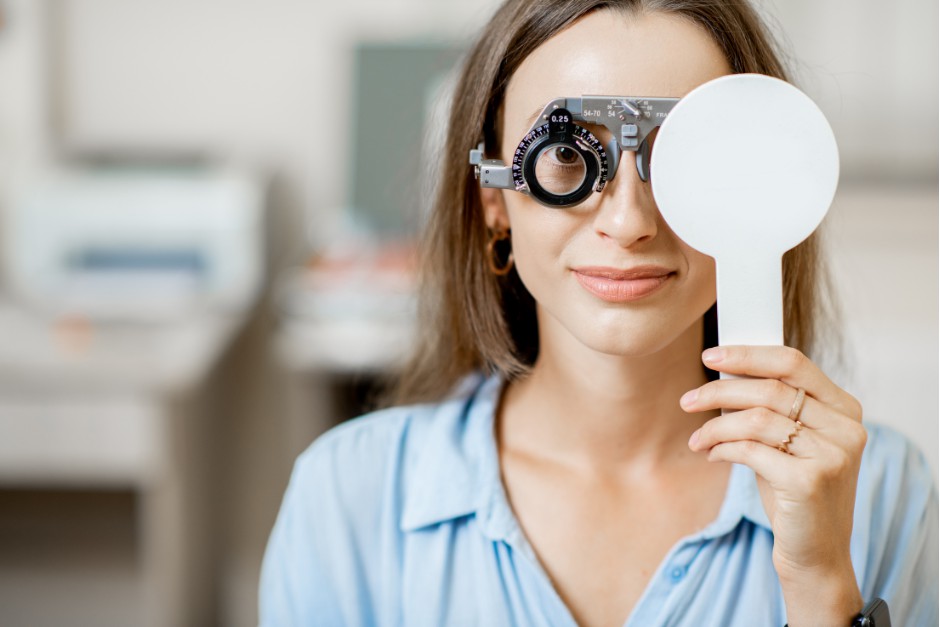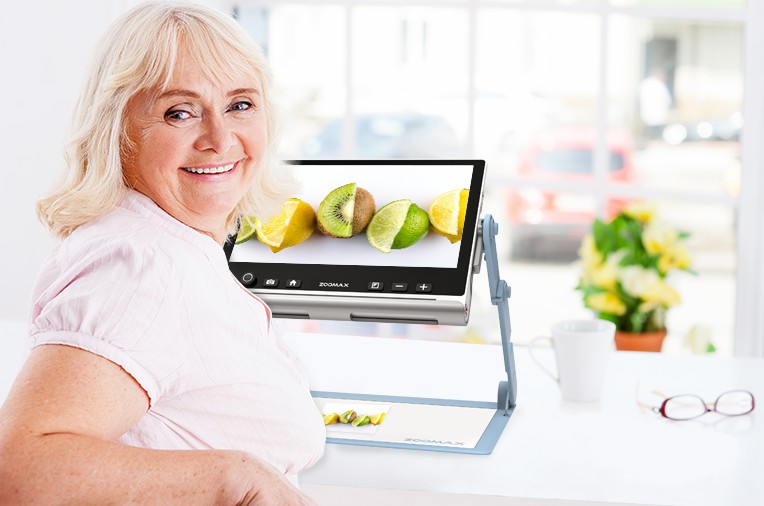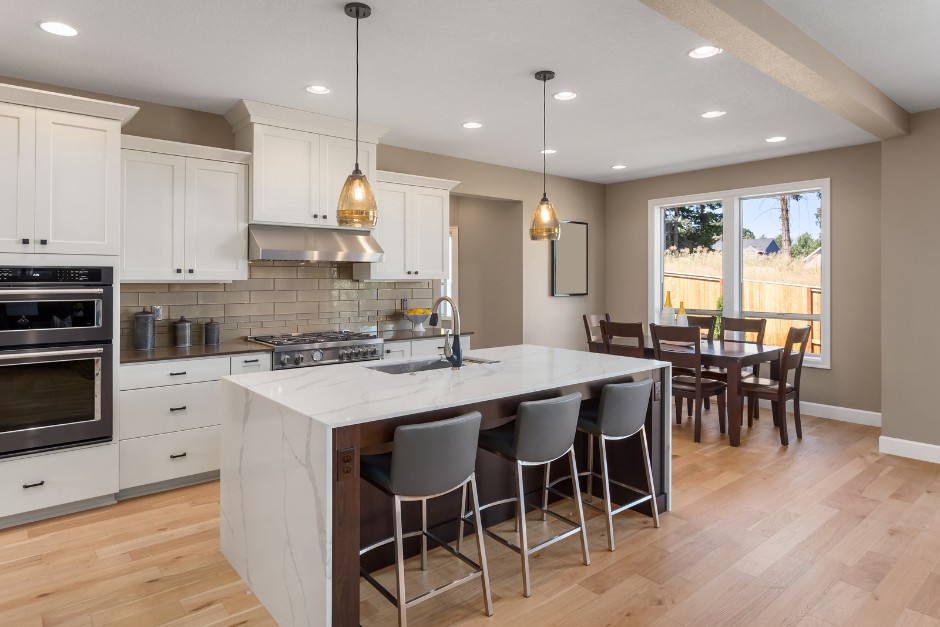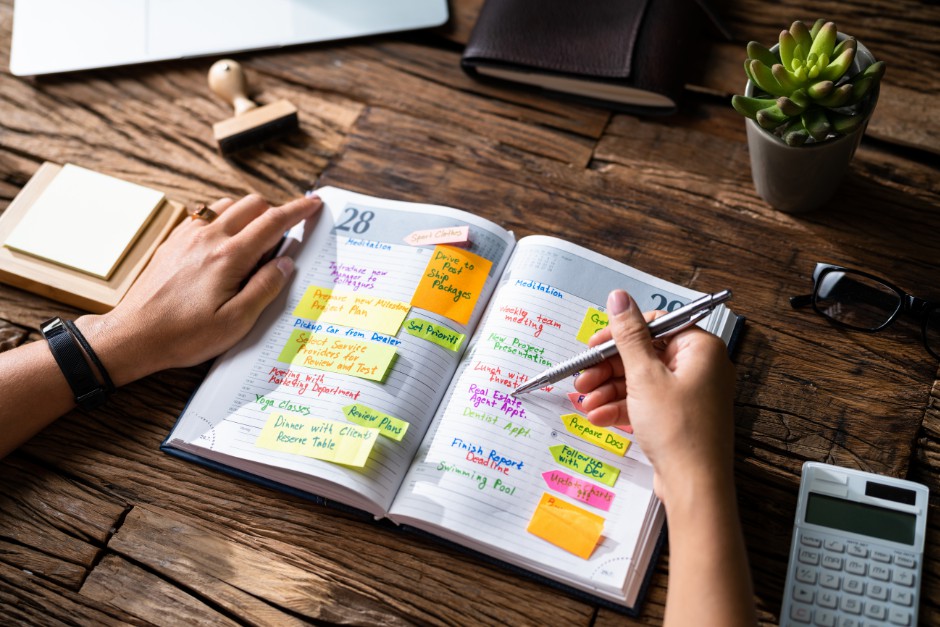In a modern society with rapid technological development, living with low vision no longer means being unable to live independently. The support from high-tech tools, the community, or the government can help people with vision loss improve their ability to live independently. Whether it’s for you or your loved ones, read on to get 10 practical tips to make living with low vision easier.
Facts about Visual Condition
Developing a deep and clear understanding of the visual situations of individuals with low vision is a critical first step in establishing independent living skills that are appropriate for them. It not only helps determine treatment options for the visually impaired people, but also provides more appropriate support in daily life. For example, patients with low vision who require regular medication may be more in need of a small handheld magnifier to more clearly view important information such as drug instructions and production dates.
 A profound understanding of the visual conditions of individuals with low vision also contributes to community and low vision organizations developing more targeted assistance and rehabilitation plans, which can better meet individual needs, providing substantial assistance and promoting their integration and independent living within society. From the perspective of low vision groups, it is definitely necessary to comprehensively understand the individual’s visual conditions as the first step, whether it is to help them with vision rehabilitation or improve their independence in daily life.
A profound understanding of the visual conditions of individuals with low vision also contributes to community and low vision organizations developing more targeted assistance and rehabilitation plans, which can better meet individual needs, providing substantial assistance and promoting their integration and independent living within society. From the perspective of low vision groups, it is definitely necessary to comprehensively understand the individual’s visual conditions as the first step, whether it is to help them with vision rehabilitation or improve their independence in daily life.
Commonly, the criterion and types of vision loss can be explained as follows:
According to Severity:
- Blindness:
- Congenital Blindness: Complete loss of vision present from birth, often associated with genetic factors, prenatal development issues, or perinatal injuries.
- Acquired Blindness: Sudden or gradual complete loss of vision later in life due to factors such as injury, disease, or aging.
- Low Vision:
- Congenital Low Vision: Significant visual impairment present from birth, necessitating early intervention and tailored educational strategies.
- Acquired Low Vision: Gradual or sudden onset of significant visual impairment later in life, affecting daily activities.
Common Affected Part of the Visual System:
- Central Vision Loss: Impairs the central part of the visual field, impacting tasks like reading and recognizing faces.
- Peripheral Vision Loss: Affects the outer edges of the visual field, limiting awareness of surroundings.
- Night Blindness: Difficulty seeing in low-light conditions, often due to impaired function of rod cells in the retina.
Understanding the severity and affected part vision loss is crucial for diagnosis, treatment planning, and developing strategies to support individuals with visual impairments and independent living.
10 Tips for Independent Living
Usually, people with vision loss are able to explore the most suitable ways for them to improve their independent living skills after understanding their visual conditions comprehensively. Moreover, here are 10 tips for independent living that are basically appropriate for most visually impaired individuals:
- Find the right low vision aids
With the rapid development of technology, there are many different types of visual aids available for people with low vision to help them develop independent living skills. These low vision aids are not limited to traditional magnifying glasses, but also include electronic devices, smart assistive tools, and other forms like applications on the smartphones or tablets. By choosing the right vision aids, individuals with low vision can easily integrate into the digital age and cope with visual challenges.
 In addition, these low vision aids provide low vision people with more options to meet their individual needs. From electronic magnifiers to smart glasses, each type of vision aid offers users different functions and features, allowing them to choose based on their lifestyle and preferences. Choosing the right visual aid can further improve the living independence of people with low vision, helping them to participate more in social life and better achieve the goal of living independently.
In addition, these low vision aids provide low vision people with more options to meet their individual needs. From electronic magnifiers to smart glasses, each type of vision aid offers users different functions and features, allowing them to choose based on their lifestyle and preferences. Choosing the right visual aid can further improve the living independence of people with low vision, helping them to participate more in social life and better achieve the goal of living independently.
- Schedule regular eye examinations
Regular eye exams are actually directly related to the independence of people with low vision. Through regular eye examinations, individuals with low vision can understand their vision status in a timely manner, helping to reduce the uncertainty and risks caused by sudden vision changes. Remaining vision can also be protected to the greatest extent with early treatment. In addition, regular examinations can help people with low vision adapt to different environments and activities more quickly and flexibly by adjusting the prescription of glasses or changing assistive visual tools.
- Create a safe living environment
 Creating a safe living environment for people with low vision can reduce the risk of injury. Simple and effective methods include increasing home lighting to ensure the rooms are bright enough to improve visibility. Use contrasting colors, such as dark furniture with light floors, to clearly identify different areas and reduce the risk of collisions. Keep the living environment tidy and organized with fewer obstacles to ensure smooth movement. These practical measures will help create a safe and easy-to-navigate environment that improves the quality of life and independence of people with low vision.
Creating a safe living environment for people with low vision can reduce the risk of injury. Simple and effective methods include increasing home lighting to ensure the rooms are bright enough to improve visibility. Use contrasting colors, such as dark furniture with light floors, to clearly identify different areas and reduce the risk of collisions. Keep the living environment tidy and organized with fewer obstacles to ensure smooth movement. These practical measures will help create a safe and easy-to-navigate environment that improves the quality of life and independence of people with low vision.
Read more about how to make your home more accessible: 6 Ways to Make Home More Accessible for People with Low Vision.
- Enhance digital literacy skills
In the digital age, improving digital literacy skills can help people with low vision obtain greater access to information. By learning to use screen readers and other assistive technologies, they can more easily access digital information, allowing them to better participate in more social, professional, and academic activities. The improved digital skills not only enable low vision people to handle daily tasks and communicate more independently, but also enable them to face the challenges of a technological society with more confidence and achieve more comprehensive life independence.
- Develop time management strategies
 Effective time management is a crucial aspect of independent living for individuals with low vision. For instance, creating well-organized schedules with clear, high contrast labels can provide tangible cues for various activities, from cooking to completing work tasks. By developing personalized time management strategies, individuals with low vision can not only enhance their productivity but also reduce stress, fostering a greater sense of control and independence in their daily lives.
Effective time management is a crucial aspect of independent living for individuals with low vision. For instance, creating well-organized schedules with clear, high contrast labels can provide tangible cues for various activities, from cooking to completing work tasks. By developing personalized time management strategies, individuals with low vision can not only enhance their productivity but also reduce stress, fostering a greater sense of control and independence in their daily lives.
- Know government resources
Many local state governments are committed to providing specialized assistance to support people with low vision in improving their ability to live independently. For example, some states may offer special assistive technology training to enable people with vision loss to better utilize electronic devices and assistive tools. In terms of social services, the government may provide financial assistance to improve the living environment of individuals with low vision. By understanding and taking advantage of local government policies and resources, people with low vision can gain more comprehensive access to support, thereby increasing their overall independence.
- Participate in low vision rehabilitation
 Participating in low vision rehabilitation is a key step in improving the independence of life. It will bring comprehensive support and development for people with vision loss. Low vision rehabilitation often includes not only professional vision therapy, but also various skills training and psychological support. People with low vision are not only better able to adapt to their visual challenges, but they are also able to develop stronger life skills that increase their independence in life at home, in society, and in the workplace after participating in low vision rehabilitation.
Participating in low vision rehabilitation is a key step in improving the independence of life. It will bring comprehensive support and development for people with vision loss. Low vision rehabilitation often includes not only professional vision therapy, but also various skills training and psychological support. People with low vision are not only better able to adapt to their visual challenges, but they are also able to develop stronger life skills that increase their independence in life at home, in society, and in the workplace after participating in low vision rehabilitation.
- Build a support group
Establishing a support group is an important way for people with low vision to get timely help and share experiences in independent living. This group can include family, friends, and relevant professionals. The involvement of family and friends can provide practical support in everyday life and help cope with daily challenges. Professionals, such as vision rehabilitation specialists, can provide professional advice and guidance. With the help of the group, people with vision loss are able to better adapt to their new lifestyle and receive timely professional help when needed, further improving their independence in life.
- Manage medications and nutrition
 People with low vision should particularly pay special attention to nutritional intake and timely medication in their daily lives. Good medication management is the key to eye health, and regular eye exams can help monitor changes in potential problems and provide effective treatment. In addition, when facing long-term medication, people with low vision should also consult a doctor or professional nutritionist to ensure a proper diet and reduce potential drug side effects and interactions to maintain overall health and improve quality of life, to better adapt to the various challenges of daily life.
People with low vision should particularly pay special attention to nutritional intake and timely medication in their daily lives. Good medication management is the key to eye health, and regular eye exams can help monitor changes in potential problems and provide effective treatment. In addition, when facing long-term medication, people with low vision should also consult a doctor or professional nutritionist to ensure a proper diet and reduce potential drug side effects and interactions to maintain overall health and improve quality of life, to better adapt to the various challenges of daily life.
- Maintain a positive mindset
Maintaining a positive mindset is actually the basis for people with low vision to cope with independent life. When faced with visual challenges and the difficulties of daily life, a positive attitude not only helps relieve mental stress, but also increases individuals’ overall confidence. By cultivating an optimistic mindset, individuals with low vision can face life’s challenges with more confidence. Viewing a good attitude as the foundation for independent living can help relieve stress in daily life and provide low vision people with more possibilities to pursue independent lives.

